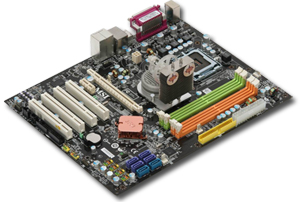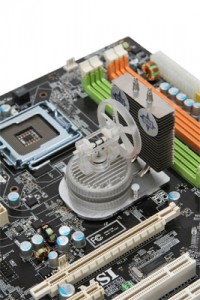MSI motherboard sports Stirling engine

Micro-Star International recently announced that it will be offering a motherboard with a Stirling engine-powered cooling fan for the northbridge. This device would reduce total electricity usage, and be a “more ECO-friendly design.” Yet, I’m not convinced that a Stirling engine would provide ideal cooling for hard-core computer operation. At the very least, I’m sure it’s unnecessary.
A normal, cooled, idle northbridge temperature should be somewhere just over 40 degrees Celsius (104 Fahrenheit). When running at full bore, a motherboard’s northbridge temperatures might hover around 55 C (131 F), when cooled. Running at a higher temperature can mean a loss of system stability and system crashes, which is why cooling is necessary for computer chips like the northbridge, CPUs, and GPUs.

MSI’s new Stirling engine-powered cooler is designed to maintain normal operating temperatures. Stirling engines operate by using a heat source to cause a gaseous working fluid to expand to raise a piston, the gaseous working fluid then cools, lowering the piston. The movement of the piston generates power. The beta Stirling engine MSI uses is air-filled, and powers a cooling fan. The animation below demonstrates how this would be put to use on a motherboard.
As the motherboard heats up, and the engine begins to work, the temperature will come into balance. As the temperature rises, the engine will operate more quickly, and bring the temperature back into balance. The cooling system should be designed to keep the northbridge in the normal operating range, ideally somewhere around 40 C.
However, due to the time it takes heat to be converted into energy, there is a lag between the northbridge heating up, the engine responding, and the chip cooling down. This delay can be shortened by using more reactive gaseous liquids and reducing friction by proper lubrication and precision engineering and machining, which would likely be cost-prohibitive in this application. If the cooler isn’t very precise, there could be temperature spikes that cause system instability. Furthermore, if the engine isn’t efficient enough at cooling, hard-core computing could also result in instability.
What’s the likelihood of stability issues? Very slim, when you consider many people replace the fans on their motherboard’s northbridge with a fanless heatsink, to reduce noise. If a simple heatsink will do the trick, why go to all the trouble to introduce a Stirling engine-powered cooler? The geek factor would be my guess.


